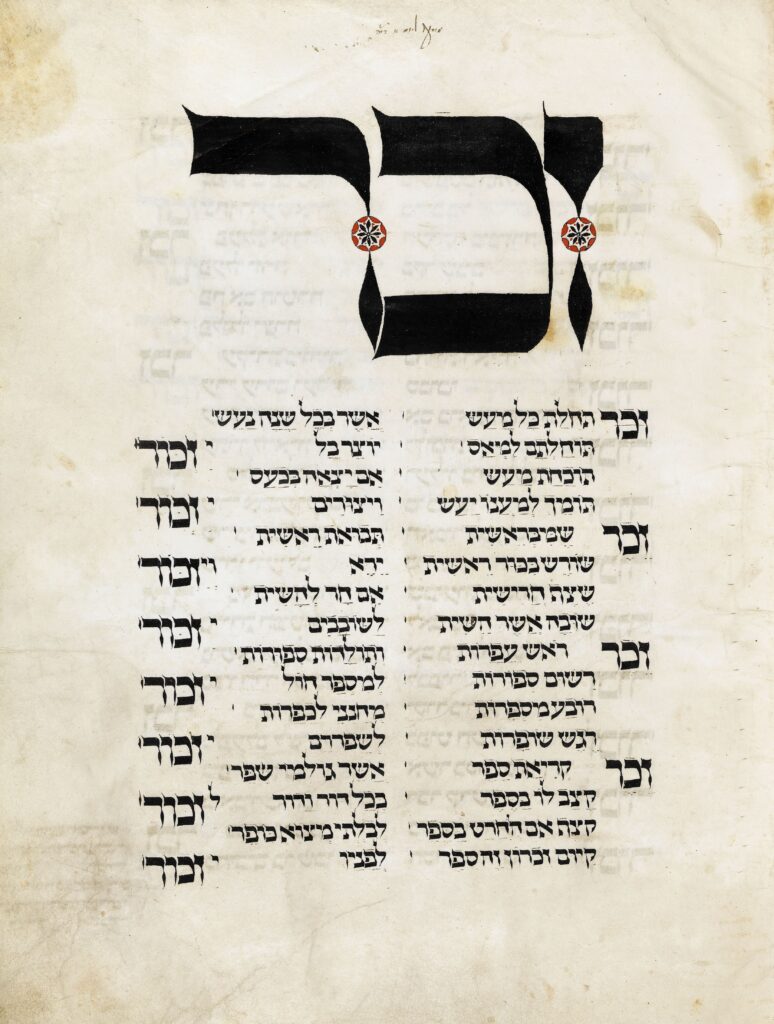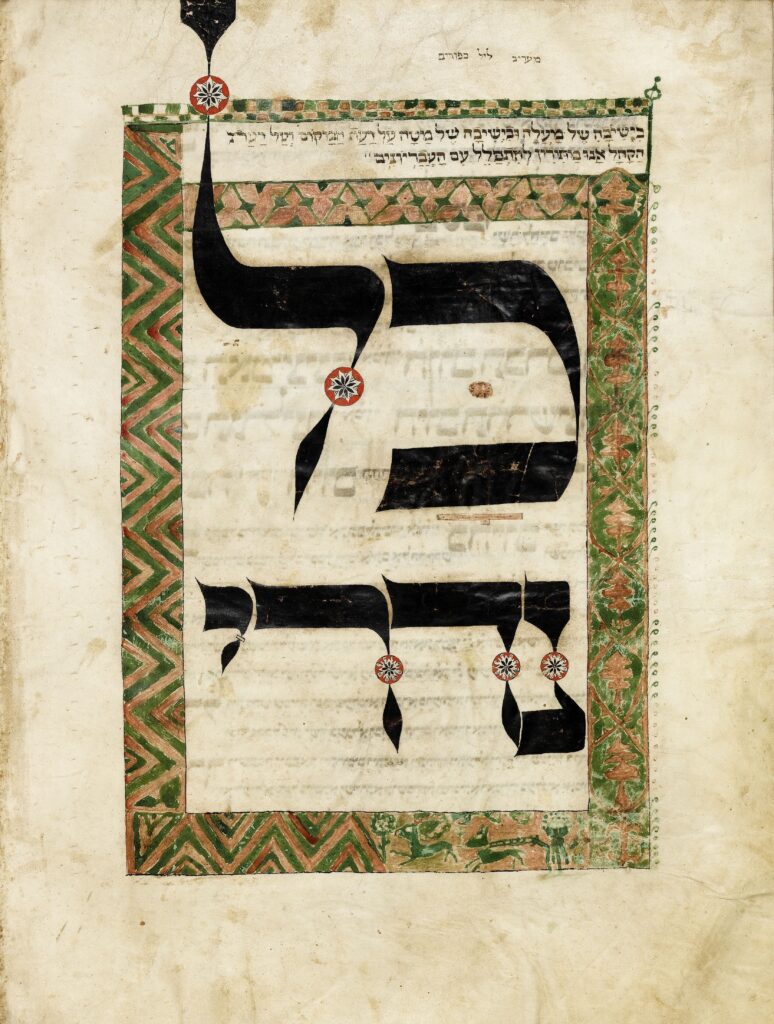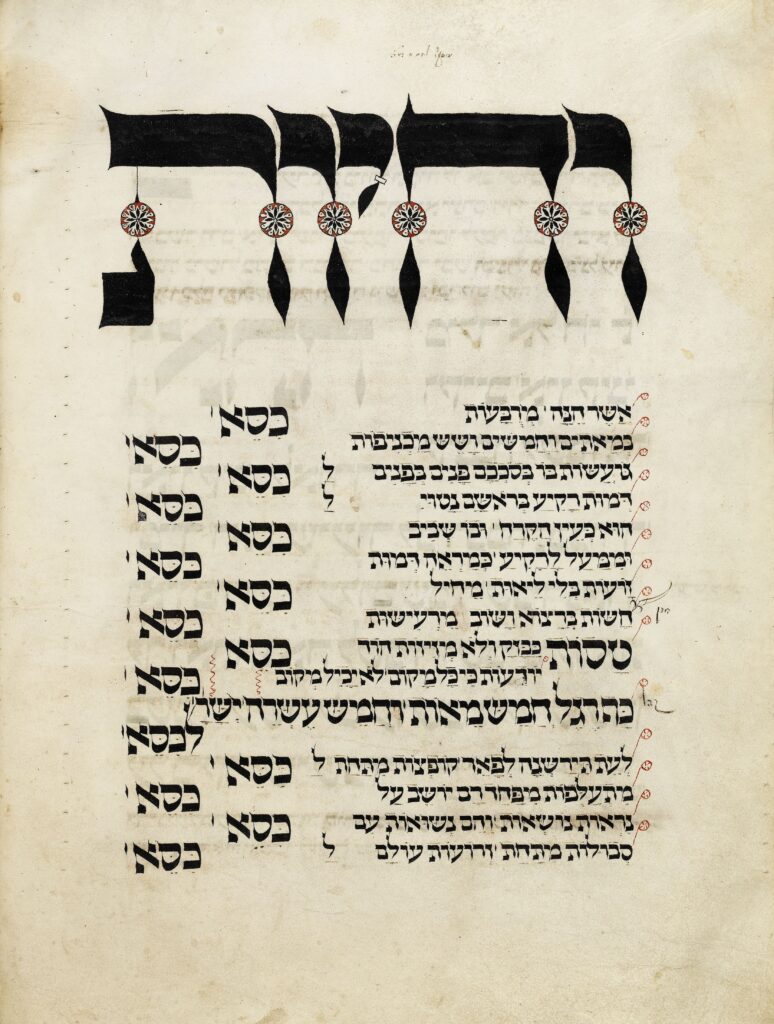The Esslingen Mahzor
The Esslingen Mahzor was written and decorated by Kalonymos ben Judah, who lived in Mainz in the thirteenth century; it is his only known work and we know little else about him. In the colophon, ben Judah writes that he completed the mahzor on 28 Tevet 5050 (January 12, 1290), making it the earliest dated Hebrew manuscript from Germany. The portion of the mahzor in JTS’s Special Collections contains the liturgy for the second day of Rosh Hashanah, Kol Nidrei, and Yom Kippur morning. A second codex—housed in the Bibliotheca Rosenthaliana at the University of Amsterdam—includes the liturgy for the rest of Yom Kippur and Sukkot. Columbia art historian Evelyn M. Cohen identified the JTS manuscript as the long-missing first half of the Rosenthalia codex; her 1991 article on the subject explains the connection between the two sections and describes noteworthy aspects of the mahzor.
Yet another portion of the mahzor, containing the liturgy for the first night, first day, and second night of Rosh Hashanah, remains missing (the JTS codex begins part way through the evening service for the second night). Another possibility is that the two existing manuscripts belonged to a much larger missing work containing the holiday liturgy for the entire year.
The Esslingen Mahzor is replete with creative text layouts highlighting key thematic words, acrostics, and other aspects of the liturgy. The non-textual elements feature ornamentation more than illustration, including a curious repeated motif of small winged dragon heads decorating certain letters and words.
Dr. David Kraemer, Joseph J. and Dora Abell Librarian and Professor of Talmud and Rabbinics, describes how the mahzor would have been used in medieval times.
With Dr. David Kraemer
Explore the Digitized Esslingen Mahzor







